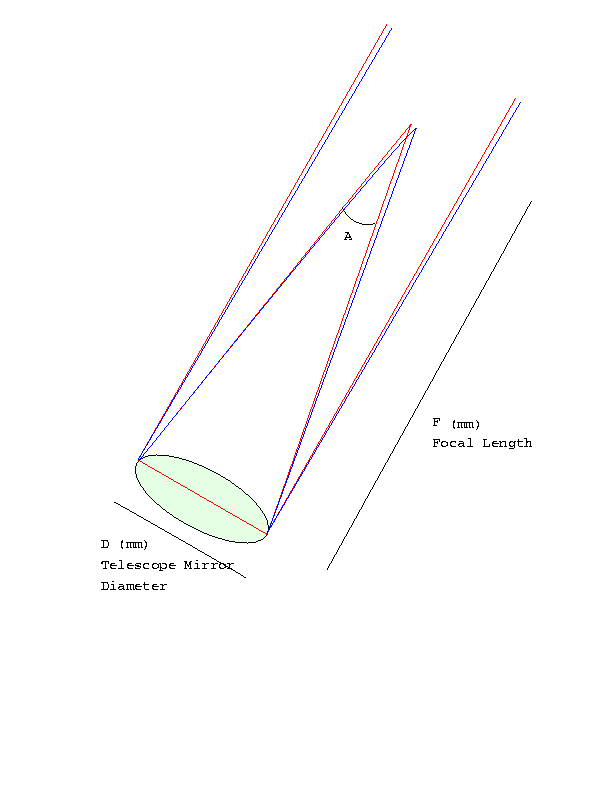 .
.The Plate Scale of a Telescope
The plate scale of a telescope can be described as the number of degrees, or arcminutes or arcseconds, corresponding to a number of inches, or centimeters, or millimeters (etc.) at the focal plane (where an image of an object is "seen") of a telescope. Each telescope has its own plate scale, depending on the characteristics of the all the optical elements (mirrors or lenses) that are in the telescope. Very simply, the plate scale for a telescope can be calculated if you know the diameter, D, of the primary mirror and the telescopeís effective focal length, F, or if you have its f-number (f/#):
 .
.
In this common expression of plate scale, D is in millimeters (mm). The f-number is unitless, as it is a ratio of the focal length to the diameter:
 .
.
In principle, the f/# can be determined from the design specifications of a given telescope, but, in practice, it is checked by measuring the effective focal length directly once the telescope is assembled.
 .
.
More Detail
If you canít remember the equation, it might be helpful to know that you can figure out the equation yourself, using the small angle approximation. In the picture above,
 (1)
(1)
Since A is a small angle, and expressed in radians (and then converted into arcseconds, 1 radian = 206265 arcseconds), then
![]()
and so now
 .(2)
.(2)
The plate scale is the ratio between the angle A and diameter D of the telescope (in arcseconds per mm) so now
 (3)
(3)
By subsituting equation (2) into (3) for A,
and remembering that  so THEN
so THEN
 .
.